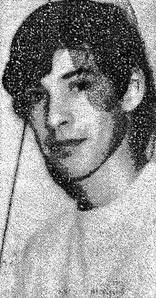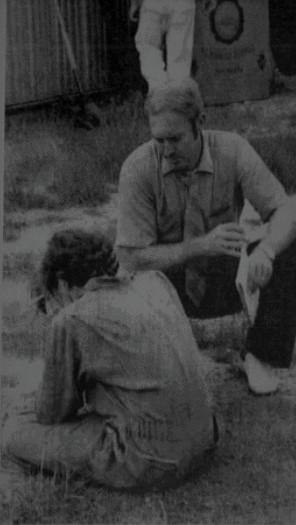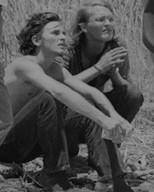
b: 1956
Elmer Wayne Henley Jr.
Summary
Name:
Years Active:
1972 - 1973Birth:
May 09, 1956Status:
ImprisonedClass:
Serial KillerVictims:
6+Method:
Strangulation / ShootingNationality:
USA
b: 1956
Elmer Wayne Henley Jr.
Summary: Serial Killer
Name:
Elmer Wayne Henley Jr.Status:
ImprisonedVictims:
6+Method:
Strangulation / ShootingNationality:
USABirth:
May 09, 1956Years Active:
1972 - 1973Date Convicted:
June 27, 1979bio
Elmer Wayne Henley Jr. was born on May 9, 1956, in Houston, Texas. He was the eldest of four sons of Elmer Wayne Henley Sr. and Mary Pauline Henley (née Weed). His father struggled with alcoholism and was known to physically assault his wife and sons. Despite this abuse, Mary Henley did her best to give her children a good education and keep them out of trouble. In 1970, when Henley was 14, his parents divorced. His mother got custody of all four sons and worked as a cashier to support the family.
At first, Henley was a very good student. However, after the divorce, he started taking part-time jobs to help his mother pay the bills. This change affected his school performance, and his grades began to decline. By age 15, Henley had dropped out of high school. Eventually, he began to create a minor criminal record, with arrests for assault with a deadly weapon in 1971 and burglary the following year.
Before leaving high school, Henley became friends with David Brooks, a boy a year older than him. They often skipped school together. Through Brooks, Henley met Dean Corll, an older man with whom he later spent time. Initially, Henley did not understand the true nature of Corll's relationship with Brooks. Although he admired Corll's work ethic, he suspected Corll was homosexual and thought that Brooks was somehow involved.
As the friendship grew, Henley started spending time with Corll as well. Corll told him that he was involved in organized theft and they began burglarizing homes together. Henley was often paid small amounts of money for their efforts. At one point, Corll tested Henley by asking if he would be willing to kill if necessary, to which Henley replied affirmatively.
In 1971, Henley became aware of several boys who had disappeared from his neighborhood. He had friends who were among the missing boys, and he took part in search efforts for them. This series of disappearances deeply impacted him and his friends. Later, during the winter of 1971, Henley was convinced by Brooks to visit Corll again under the pretense of making money.
During this visit, Henley was offered money to help Corll find boys. Even though he declined the offer initially, Henley eventually decided to assist Corll.
murder story
On March 24, Wayne Henley, accompanied by Dean Corll and David Brooks, convinced his 18-year-old friend, Frank Aguirre, to visit Corll’s home under the pretense of smoking marijuana. Once inside, Aguirre was given marijuana and then persuaded to handcuff himself. Corll then dragged him into the bedroom, where he was tied to a torture board, assaulted, tortured, and ultimately strangled before being buried at High Island Beach. Henley later claimed he had tried to talk Corll out of killing Aguirre, but Corll refused. It was at this moment that Corll revealed to Henley that the previous victims he had helped abduct had also been raped and murdered—and that Aguirre would meet the same fate.
Corll had rented a boat shed on Silver Bell Street in southwest Houston, where police would later uncover seventeen bodies. Eventually, Henley learned from Corll and Brooks that his childhood friend, David Hilligiest, had also been murdered and buried in the same shed along with Gregory Malley Winkle, a boy Hilligiest had gone swimming with.
Despite fully realizing the horrific reality of what was happening, Henley continued aiding Corll and Brooks in luring more victims—often young boys from their neighborhood. Less than a month after Aguirre’s murder, Henley and Brooks persuaded another friend, 17-year-old Mark Scott, to attend a party at Corll’s home. Like Aguirre, Scott was assaulted, tortured, strangled, and buried at High Island Beach. On May 21, two more Heights youths, Billy Gene Baulch Jr. and Johnny Ray Delome, were also murdered and buried there.
By June 1972, Corll moved to an apartment in Westcott Towers. Within a month, 17-year-old Steven Sickman was killed. On October 3, Henley assisted Corll in the abduction and murder of two more Heights boys, Wally Simoneaux and Richard Hembree. Brooks later claimed that during this ordeal, Henley accidentally shot Hembree in the mouth with a .22-caliber gun while recklessly waving it around. Both boys were later strangled and buried in the boat shed.

The murders continued. In November, 18-year-old Willard Karmon Branch Jr. was shot and emasculated before being buried in Corll’s boat shed. Later that month, 19-year-old Richard Kepner was abducted while walking to a payphone to call his fiancée. By the time Kepner was killed and buried at High Island, Henley had directly assisted in at least nine murders.
On February 1, 1973, Corll abducted and murdered 17-year-old Joseph Lyles without Henley’s help. Around this time, Henley temporarily left Houston and moved to Mount Pleasant. In the spring of 1973, Henley attempted to enlist in the U.S. Navy, but his application was rejected on June 28 due to his lack of a high school diploma. Though his IQ was later tested at 126, his limited education prevented his acceptance. In a 2010 interview, Henley claimed he wouldn’t have left even if accepted, fearing Corll would harm his younger brothers.
Between June and July 1973, Corll, Brooks, and Henley killed seven more victims, ranging from 15 to 20 years old. Henley personally participated in either the abduction or murder of at least five of them. On June 4, 15-year-old Billy Lawrence, a friend of Henley, was abducted and endured three days of torture at Corll’s new residence in Pasadena before being strangled and buried at Lake Sam Rayburn. Less than two weeks later, 20-year-old hitchhiker Raymond Blackburn met the same fate. On July 7, 15-year-old Homer Garcia was shot and buried at the lake after being abducted.
The killings escalated. On July 12 and 19, John Sellars and Michael Baulch were murdered. Baulch, only 15, was the younger brother of Billy Gene Baulch Jr., who had been killed the previous year. On Corll’s orders, Henley lured two more friends, Charles Cobble and Marty Jones, to Corll’s apartment on July 25. Two days later, Cobble was shot and Jones was strangled before being buried in Corll’s boat shed.

Henley was not involved in Corll’s final known killing. On August 3, Corll and Brooks abducted and murdered 13-year-old James Dreymala. The boy was restrained on Corll’s torture board, raped, tortured, strangled, and buried in the boat shed.
On the night of August 7, 1973, Henley invited 20-year-old Timothy Cordell Kerley to a party at Corll’s Pasadena residence. Kerley, a casual acquaintance of Corll, accepted the invitation. After drinking and sniffing paint fumes, Henley and Kerley left but soon returned with Henley’s 15-year-old friend, Rhonda Louise Williams, who had run away from home after a violent encounter with her father.
When they arrived at Corll’s home around 3:00 a.m., Corll was furious that Henley had brought a girl, believing she had ruined his plans. However, he remained outwardly calm, allowing the trio to continue drinking and using drugs until they passed out.
Henley awoke to find himself bound and gagged, with Corll handcuffing his wrists. Kerley and Williams were also tied up nearby, with Kerley stripped naked. Corll, enraged, told Henley he had ruined everything and declared he was going to kill all three of them.
Desperate to save himself, Henley convinced Corll to untie him, promising to help torture and kill the others. Corll agreed, then moved Kerley and Williams to his bedroom, tying them to his plywood torture board. He ordered Henley to strip Williams while he prepared to assault Kerley. As Corll began assaulting Kerley, Williams lifted her head and asked Henley, “Is this for real?” Henley confirmed it was. Then, in a moment of realization, she challenged him: “Are you going to do anything about it?”

Henley, suddenly unnerved, grabbed Corll’s .22-caliber pistol from the table and ordered him to stop. Corll ignored the threat and advanced toward him, yelling, “You won’t do it, Wayne!” Henley fired, hitting Corll in the forehead. Corll kept moving forward, so Henley fired twice more into his shoulder. Corll staggered out of the bedroom, and Henley shot him three more times in the back, killing him. Henley then freed Kerley and Williams before calling the police, confessing everything upon their arrival.
That evening, Henley confessed to assisting Corll in the abduction, torture, and murder of numerous boys since 1971. He also implicated David Brooks, explaining that they had been paid $200 per victim. Henley led police to the burial sites—Corll’s boat shed, Lake Sam Rayburn, and High Island Beach. Over the following days, police uncovered 27 bodies, making it one of the most gruesome serial murder cases in U.S. history.
Henley was indicted on six counts of murder and stood trial in July 1974. The jury deliberated for just an hour before finding him guilty, sentencing him to six consecutive 99-year terms. After his conviction was overturned in 1978, he was retried in 1979, found guilty again, and sentenced to six concurrent life terms.
Henley has repeatedly been denied parole, with his next hearing scheduled for October 2025. He remains incarcerated at the Telford Unit in Jefferson County. David Brooks was convicted in 1975 for his role in the murders and sentenced to life imprisonment. He died in May 2020 from COVID-19 complications.
Since 1994, Henley has taken up painting as a hobby. His works, which depict landscapes, flowers, and buildings, have been exhibited in Houston, though they have sparked controversy among victims’ families.